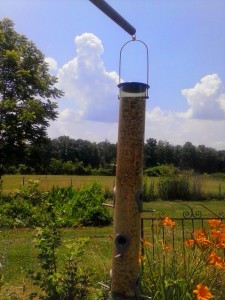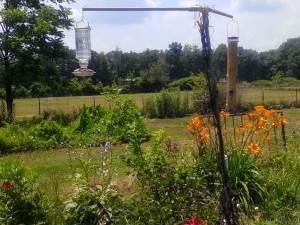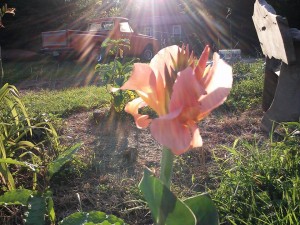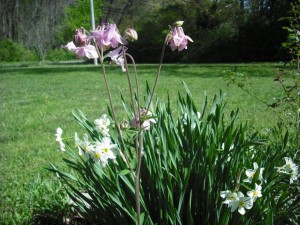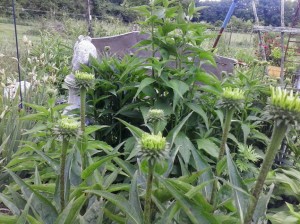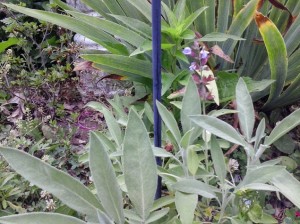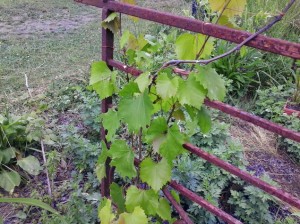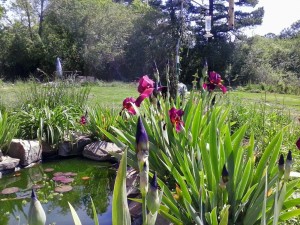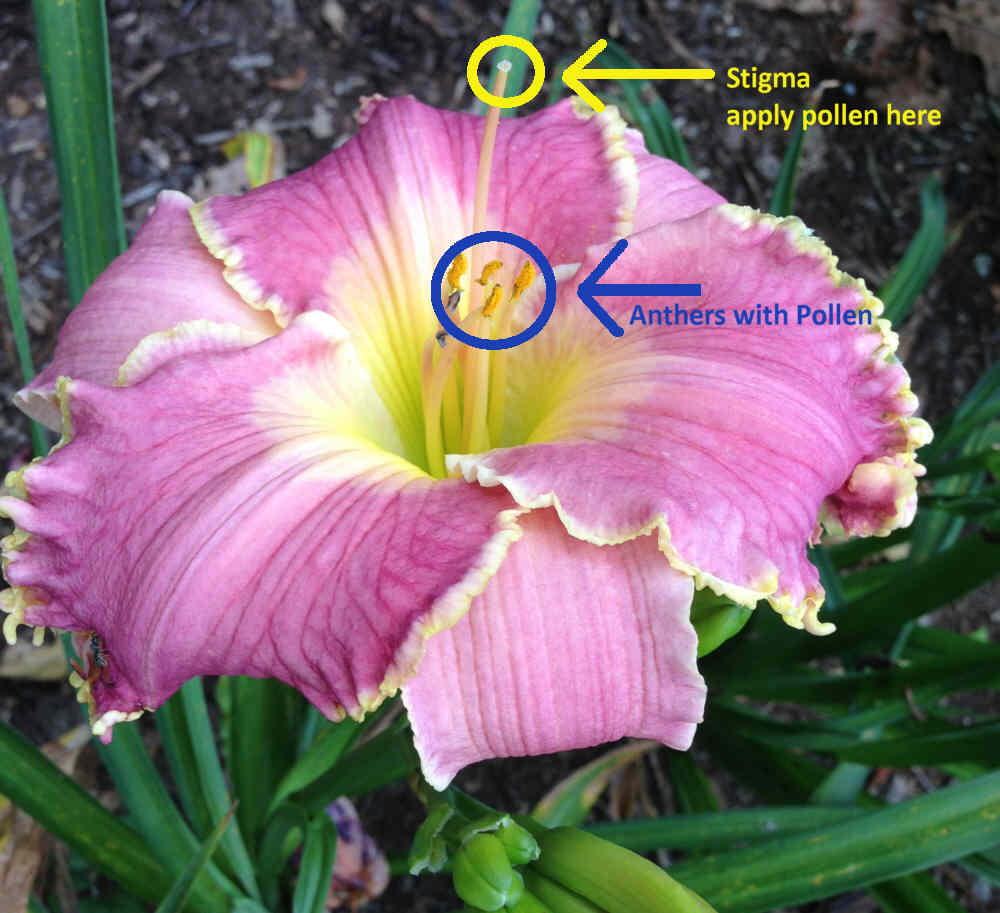My garden expands and changes each season, as most people’s probably do. It began as a small flower bed at the end of the sidewalk. It was about three feet in diameter. The next year, I extended it down the sidewalk, changed its shape, and added a border. Then, the third year, I decided to triple the area the garden occupied, and the year after that, we added a small pond and expanded the planting area yet again.
This year, rather than digging up more grass, we began adding structures. I had a hummingbird feeder sitting on a shelf in the house (where no bird would ever find it!) and bought a bird feeder on clearance last winter, so one of the structures had to be something to hang two feeders from.
Using old tent poles, I made a structure for a vine to climb and the bird feeders to hang.
The structure went up in March, and I filled one feeder with seed, and watched for birds. A week later, the feeder was still completely full. Two weeks later, no seeds were gone. The third week, I said, “LOOK! Some seeds are gone!” My dad admitted to shaking some out for the chickens.
A month. Two months! It got to the point that I’d just shake my head every time I saw the feeder and feel bad about the money I spent on it and the bird seed. (Not much, but it was so disappointing!)
Then, one day, I saw a cardinal at the bird feeder. Within a week, two inches of bird food were gone. On the day I filled the bird feeder with seeds for the second time, I also filled the hummingbird feeder. It took a little while for the hummingbirds to find it, but I see them occasionally.
There are more birds in my yard now than there have been in the eight years we have lived here. I’ve seen bluebirds, mockingbirds, robins, hummingbirds, LOTS of cardinals, and a few days ago, two tiny, bright, gorgeous gold finches. The bird feeder empties regularly, and birds sit on top of my grape arbor most of the time. I suspect they bathe in the pond but haven’t spotted them at it yet!
Birdsong is cheerful. The birds themselves are beautiful. Having them in the garden makes me happy. If you don’t have as many birds as you’d like, try putting out a feeder. Then, wait patiently!
